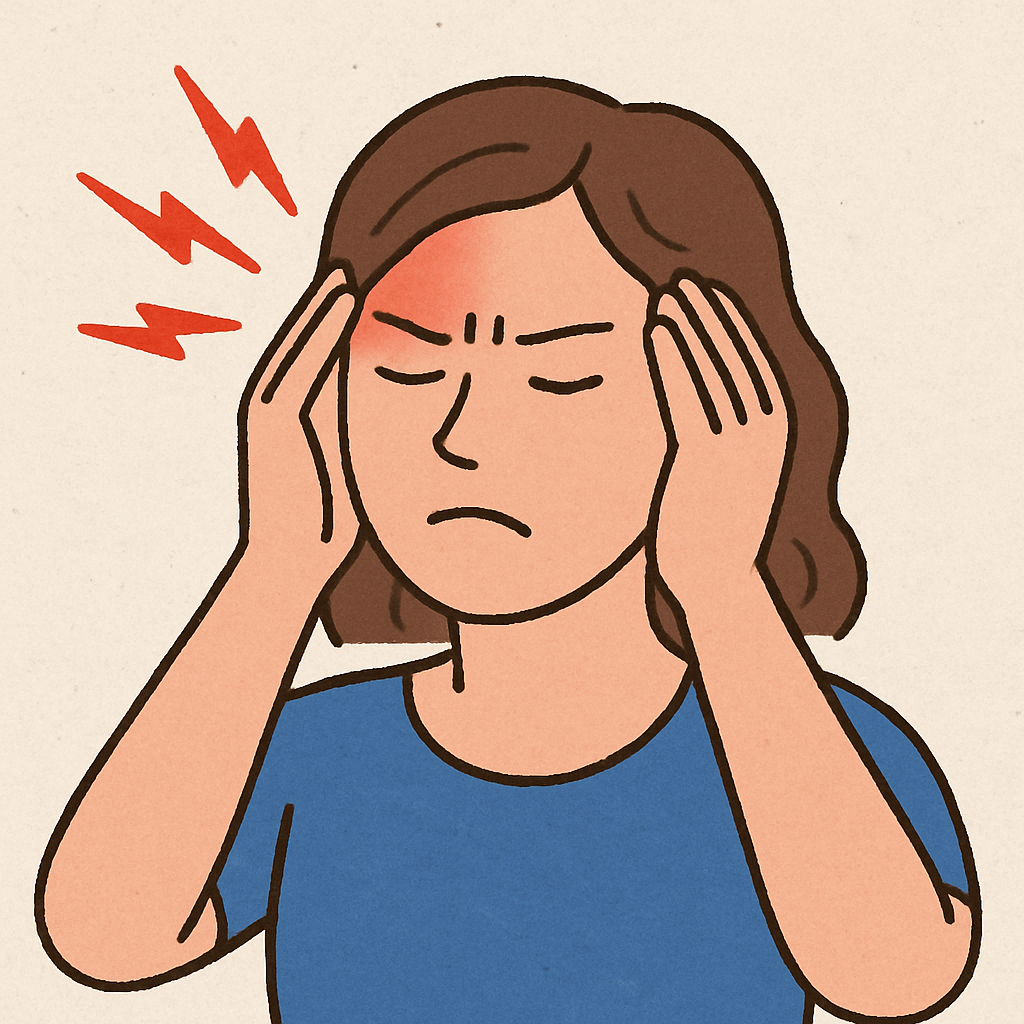
Migraines are severe headaches often accompanied by nausea, vomiting, and sensitivity to light and sound. They can last anywhere from a few hours to several days and can significantly impact your quality of life. The pain can be so intense that it interferes with daily activities, making it difficult to work, drive, or even engage in conversation. Many people with migraines report feeling a throbbing pain on one side of the head, although it can affect both sides in some cases.
The Mechanism Behind Migraines
The exact cause of migraines is still not fully understood, but it’s believed to be related to changes in the brain and its interactions with the trigeminal nerve, a major pain pathway. During a migraine attack, there is a complex interplay of brain chemicals, nerve pathways, and blood vessels. This interaction can result in the dilation and inflammation of blood vessels in the brain, which contributes to the intense pain experienced. Understanding these mechanisms is crucial in developing effective treatment strategies.
High Blood Pressure and Health Implications
High blood pressure, or hypertension, is a condition where the force of blood against your artery walls is consistently too high, which can lead to health problems like heart disease. It’s often referred to as a “silent killer” because it typically has no symptoms but can cause significant damage to the heart and arteries over time. Hypertension can also increase the risk of strokes and heart attacks, making its management essential for overall health. Regular monitoring and lifestyle changes, such as diet and exercise, are critical in controlling blood pressure levels.
Connection Between Migraines and Hypertension
Interestingly, some blood pressure medications have been found to provide relief for migraine sufferers. This dual-action can be particularly advantageous for those managing both conditions. The connection between migraines and hypertension is complex and not entirely understood, but researchers believe that the regulation of blood flow and vessel dilation plays a key role. By controlling blood pressure, these medications may help stabilize the vascular changes that trigger migraines, offering relief to those affected by both health issues.
How Blood Pressure Medications Help with Migraines
Blood pressure medications, particularly beta-blockers and calcium channel blockers, are often prescribed for migraine prevention. Here’s how they work:
Beta-blockers
Beta-blockers are medications that reduce blood pressure by blocking the effects of adrenaline, a hormone that can increase heart rate and blood pressure. They help open up blood vessels, improving blood flow and reducing the workload on the heart. This can also help prevent the frequency and severity of migraines. Beta-blockers like propranolol and metoprolol have been widely studied for their efficacy in migraine prevention. By reducing the excitability of nerve pathways involved in migraines, these medications can decrease the intensity and frequency of attacks.
Beta-blockers are typically prescribed as a preventative measure, meaning they are taken regularly to reduce the likelihood of migraine occurrence. Patients often report fewer and less severe migraines after starting beta-blocker therapy. However, it may take several weeks to notice significant improvements, and not all individuals will respond the same way. It’s important to work closely with a healthcare provider to determine the most appropriate dosage and monitor any potential side effects, such as fatigue or dizziness.
Calcium Channel Blockers
Calcium channel blockers prevent calcium from entering the cells of the heart and blood vessel walls, resulting in lower blood pressure. They also help prevent migraines by stabilizing blood vessel walls and improving blood flow to the brain. Verapamil is a commonly used calcium channel blocker for migraine prevention. It works by relaxing blood vessels, which can reduce the likelihood of migraine-triggering spasms.
These medications are often considered when beta-blockers are not suitable or have not been effective. Patients using calcium channel blockers for migraines often experience a reduction in the number and severity of their headaches. Like beta-blockers, it may take time to see full benefits, and dosage adjustments may be necessary based on individual response. Potential side effects can include constipation, dizziness, and swelling of the ankles, which should be discussed with a healthcare provider.
ACE Inhibitors and Angiotensin II Receptor Blockers
ACE inhibitors and angiotensin II receptor blockers (ARBs) are other classes of blood pressure medications that have shown promise in migraine prevention. ACE inhibitors work by preventing the conversion of angiotensin I to angiotensin II, a potent vasoconstrictor. By reducing the effects of angiotensin II, these medications help relax blood vessels and lower blood pressure. ARBs, on the other hand, block the action of angiotensin II directly.
Both ACE inhibitors and ARBs can be effective in preventing migraines, particularly in patients who also have hypertension. They are generally well-tolerated, with common side effects including cough (for ACE inhibitors) and dizziness. As with other blood pressure medications, it is important to monitor blood pressure regularly and communicate any side effects to your healthcare provider.
Migraine Relief Drugs and Their Interactions
When using blood pressure medications to manage migraines, it’s essential to be aware of potential interactions with other migraine relief drugs. Always consult your healthcare provider before starting any new medication regimen.
Common Migraine Relief Drugs
- Triptans: These are often used for acute migraine relief and work by narrowing blood vessels in the brain. They can interact with certain blood pressure medications, so monitoring is crucial. Triptans are effective for many patients but should be used with caution in those with cardiovascular conditions, as they can affect blood pressure and heart rate.
- NSAIDs (Nonsteroidal Anti-inflammatory Drugs): Medications like ibuprofen can help alleviate migraine pain. However, prolonged use should be discussed with a doctor, especially when combined with blood pressure meds. Long-term use of NSAIDs can lead to gastrointestinal issues and kidney damage, making it important to balance their use with potential side effects.
- Antidepressants: Some antidepressants are also used for migraine prevention. They can interact with blood pressure medications, so medical guidance is necessary. Tricyclic antidepressants and certain SSRIs can be effective in reducing migraine frequency, but they require careful monitoring due to possible interactions and side effects such as weight gain or dry mouth.
Importance of Medical Guidance
Consulting with a healthcare provider is crucial when managing migraines with blood pressure medications and other drugs. A healthcare provider can help identify potential interactions and adjust dosages to minimize side effects. It’s also important to inform your provider of all medications and supplements you are taking to avoid any harmful interactions. Regular follow-up appointments can help monitor the effectiveness of the treatment plan and make necessary adjustments.
Potential Drug Interactions
Blood pressure medications can interact with other drugs, affecting their efficacy or increasing the risk of side effects. For example, certain blood pressure medications may enhance the effects of sedatives or other medications that depress the central nervous system, leading to increased drowsiness or dizziness. It’s essential to review all medications with a healthcare provider to ensure safe and effective treatment for both migraines and hypertension.
Benefits and Risks of Using Blood Pressure Medications
Benefits
- Dual Treatment: For those with both hypertension and migraines, blood pressure medications can address both issues simultaneously. This dual benefit can simplify treatment plans and improve patient compliance. By managing blood pressure and reducing migraine frequency, patients may experience an overall improvement in quality of life.
- Proven Effectiveness: Many patients experience a reduction in the frequency and severity of migraines with these medications. Clinical studies have demonstrated the efficacy of beta-blockers, calcium channel blockers, and other blood pressure medications in reducing migraine attacks. These medications can be particularly beneficial for patients who have not responded well to other migraine treatments.
- Preventative Approach: Unlike acute migraine treatments, blood pressure medications can help prevent migraines from occurring in the first place. This proactive approach can reduce the need for emergency medications and improve long-term outcomes. By preventing migraines before they start, patients may experience fewer disruptions to their daily lives and greater overall well-being.
Risks and Considerations
- Side Effects: Like any medication, blood pressure drugs can cause side effects such as dizziness, fatigue, or cold extremities. These side effects can vary depending on the specific medication and individual patient factors. It’s important to report any new or worsening symptoms to a healthcare provider, who can adjust the treatment plan as needed.
- Medication Interactions: As mentioned, these medications can interact with other drugs, requiring careful management. Patients should inform their healthcare provider of all medications and supplements they are taking to avoid potential interactions. Regular monitoring and communication with a healthcare provider can help manage these interactions effectively.
- Individual Response: Not all patients will respond to blood pressure medications for migraines, and adjustments may be necessary. Each patient’s response to treatment can vary, and finding the right medication and dosage may take time. It’s important to work closely with a healthcare provider to tailor the treatment plan to individual needs and preferences.
Exploring Other Migraine Treatment Options

While blood pressure medications are a viable option, they are not the only approach to managing migraines. Here are some other treatment options to consider:
Lifestyle Changes
- Diet and Nutrition: Identifying and avoiding food triggers can reduce migraine frequency. Common triggers include caffeine, alcohol, and certain foods like aged cheeses and processed meats. Keeping a food diary can help identify specific triggers and guide dietary modifications.
- Exercise: Regular physical activity can help manage stress and improve overall health, potentially reducing migraines. Exercise can release endorphins, which are natural pain relievers, and improve sleep quality, both of which can contribute to migraine prevention. It’s important to choose activities that are enjoyable and sustainable to maintain a consistent exercise routine.
- Sleep Hygiene: Establishing a consistent sleep routine can help prevent migraines. Good sleep hygiene practices include going to bed and waking up at the same time each day, creating a relaxing bedtime routine, and minimizing screen time before bed. Adequate and restful sleep can reduce stress and improve overall well-being, contributing to migraine prevention.
Alternative Therapies
- Acupuncture: Some find relief through acupuncture treatments, which may help reduce the frequency and intensity of migraines. Acupuncture involves the insertion of thin needles into specific points on the body, which is believed to stimulate the nervous system and release natural pain-relieving chemicals. While not effective for everyone, some patients report significant improvements in migraine symptoms.
- Biofeedback: This technique teaches you how to control certain body functions, which can help manage migraine triggers. Biofeedback involves using electronic sensors to monitor physiological functions such as heart rate and muscle tension. By becoming aware of these functions, patients can learn to control them and reduce stress, a common migraine trigger.
- Herbal Supplements: Supplements like butterbur and feverfew have been used to prevent migraines, though you should consult a healthcare professional before use. These supplements are believed to have anti-inflammatory and vasodilatory effects, which may contribute to migraine prevention. It’s important to discuss the use of supplements with a healthcare provider to ensure safety and avoid potential interactions with other medications.
Conclusion
Blood pressure medications offer a promising option for managing migraines, especially for those who also deal with hypertension. By understanding the benefits and potential interactions of these medications, you can make informed decisions about your migraine treatment plan. Always consult with your healthcare provider to determine the best approach for your specific needs and circumstances. With the right combination of medication, lifestyle changes, and alternative therapies, many patients can achieve significant relief from migraines and improve their quality of life.



